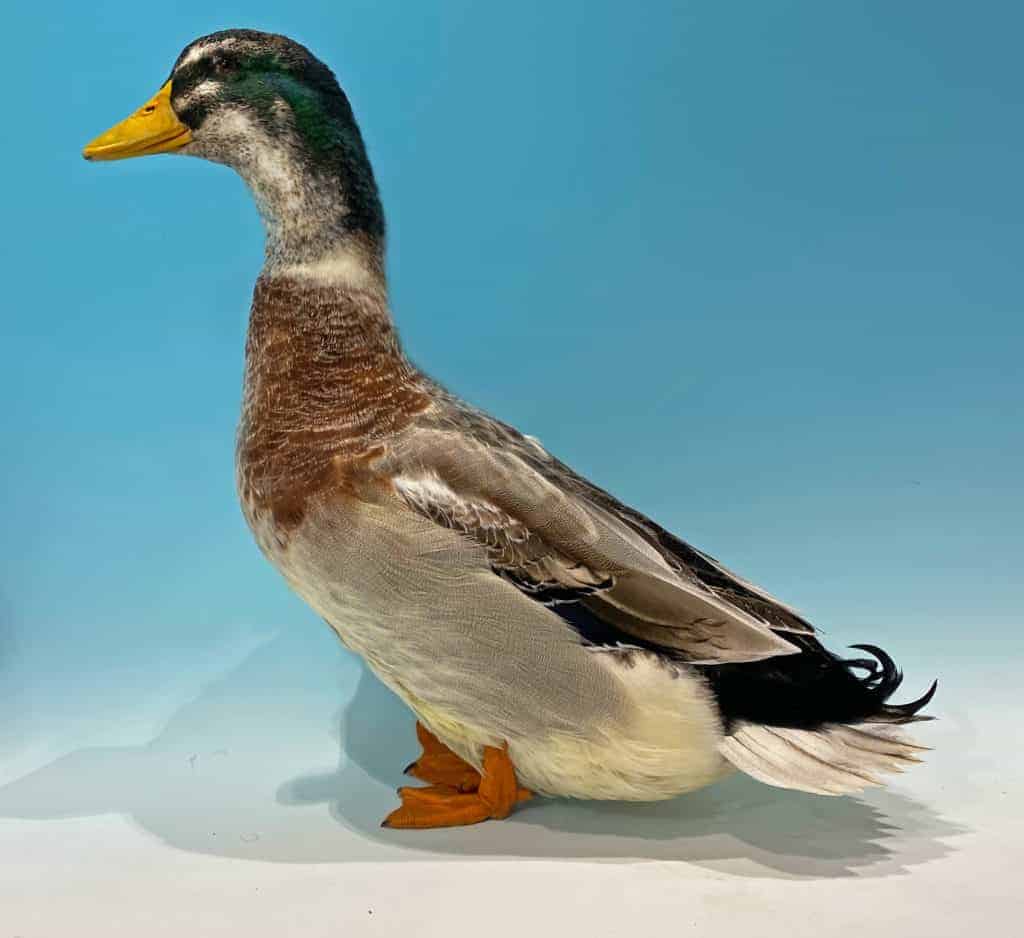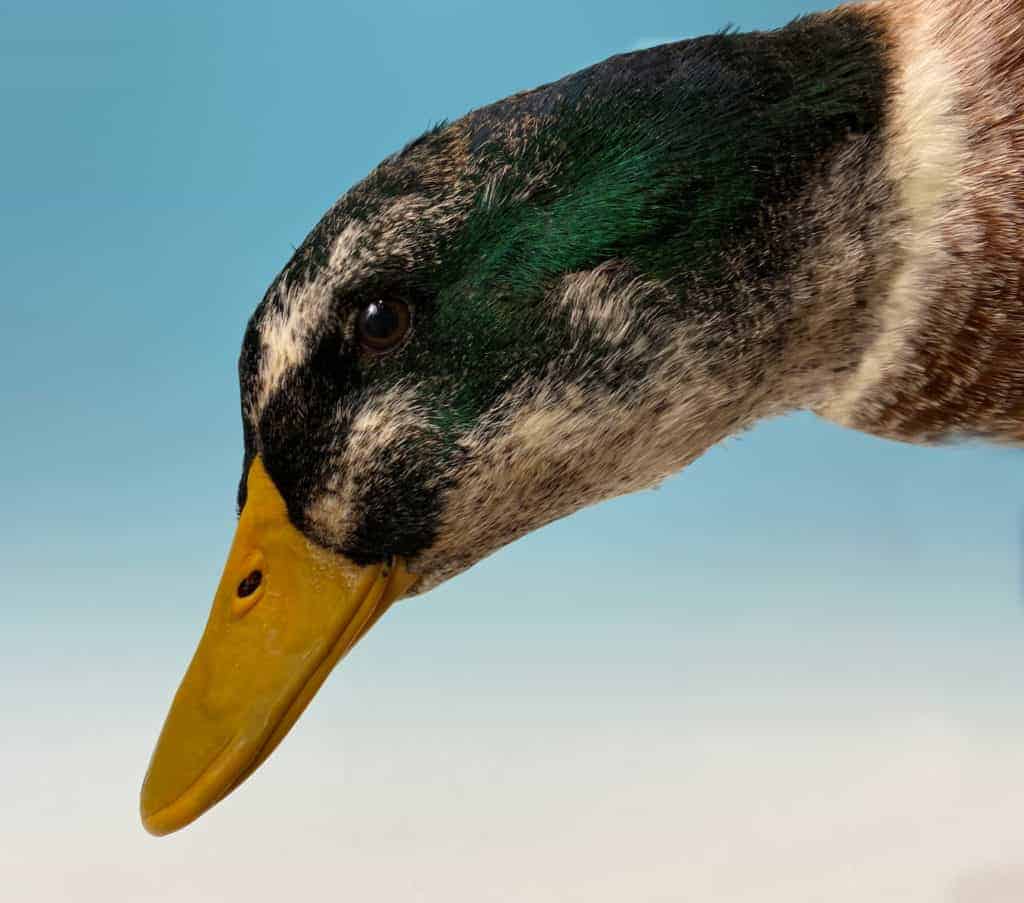Silver Appleyard

The Silver Appleyard was developed by expert waterfowl breeder, Reginald Appleyard, in the 1930s. Reginald Appleyard was also known for developing the Ixworth Chicken. First shown in the 1940s, they were never standardised until rescued by the late Tom Bartlett, who had much to do with making the breed accessible again.
The Silver Appleyard is included on the RBST‘s watchlist of traditional breeds of poultry.

The Silver Appleyard led to two smaller-sized versions of the breed:
Appleyard himself created a bantam-sized version in the 1940s, by crossing Khaki Campbell ducks with Call drakes. This gives the two breeds a different genetic make-up – this smaller breed is now called the Silver Bantam.
At one third the size of the Silver Appleyard, is the Miniature Silver Appleyard, which was created by Tom Bartlett of Folly Farm. This bantam breed was standardised in 1997.
Heavy duck breed
Domesticated Mallard Anas platyrhynchos
The Silver Appleyard breed arose from a quest to produce the best all-round utility and farmyard table duck. Part of its ultimate success as an exhibition bird must surely have been down to its good looks. Little is known of the exact appearance of the breed in the first decade, the standard was not formally accepted until 1982. The standard closely follows a painting by animal artist Ernest George Wippell, commissioned in 1947. The painting was done from carcases sent in the post, so the carriage of the birds may not be quite as it should be.
Wippell’s painting of the breed was used as a standard. The drake is recognized by his colourful plumage. The claret feathers of the breast should be tipped with white, and the scapular feathers are also edged with chestnut.

The trademark of the drake is in his head markings; the green head of the Mallard is stamped with silver eyebrows and silver throat. The ducks are particularly attractive with their creamy-white feathers flecked and streaked in fawns and brown-grey.
As a utility bird, the Silver Appleyard scores well, producing a meaty, white-skinned carcass of 3-4 kg. The duck lays a good number of large white eggs.